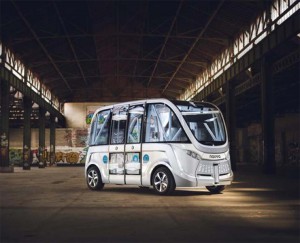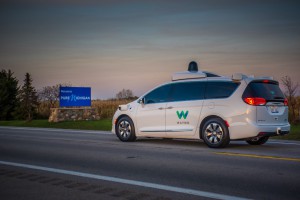
The fatal crash involving an Uber vehicle in Tempe, AZ has negatively shaped many peoples' view of autonomous vehicle technology, AAA found.
Almost exactly a year after an autonomous Uber prototype struck and killed a pedestrian in Tempe, Arizona, a new AAA study finds more than seven in ten Americans “afraid” of riding in a fully autonomous vehicle.
That’s despite the fact that 100s of self-driving prototypes are plying U.S. roads on a daily basis, a number that could soon climb into the tens of thousands if Congress moves to approve proposed legislation designed to help make the technology a part of everyday life. Already, the first self-driving vehicle ride-sharing program has gone into operation, launched last December by Google spin-off Waymo.
“Automated vehicle technology is evolving on a very public stage and, as a result, it is affecting how consumers feel about it,” said Greg Brannon, AAA’s director of Automotive Engineering.
(Lyft’s IPO counts on an autonomous future. Click Here to find out why.)
Brannon said consumer skepticism has likely been fueled by media coverage of accidents involving self-driving vehicles, including the March 2018 crash of that Uber vehicle in the Phoenix suburbs.
In all, 71% of the survey respondents said they would be afraid to ride in a self-driving vehicle. And when asked about whether they would allow a child or some other family members go for a ride, “We saw only 19% comfortable with that scenario,” said Brannon.
Only about four in ten of those who participated in the study said they would be comfortable with the idea of having groceries and other goods delivered by a fully autonomous vehicle, something that is already becoming a reality. Amazon just last month announced investments in both battery-car start-up Rivian and two self-driving vehicle start-ups. Pizza chain Domino’s has partnered with Ford Motor Co. to test the effectiveness of having autonomous vehicles deliver its pies.
(Click Here for more about Waymo’s new driverless taxi service.)
Public attitudes are a little more positive, Brannon said, when it comes to low-speed autonomous vehicles used in places like theme parks and airports, “a little over half” of the respondents saying they’d take one for a ride.
The irony is that the majority of Americans expect that self-driving vehicles will eventually become an everyday reality, 55% predicting that by 2029 most cars will have fully autonomous capabilities, according to AAA.
For proponents of the technology, the good news is that “more and more people” are experiencing either autonomous vehicles or what Brannon called “the precursors” to self-driving technology. For the 2019 model-year, the majority of new cars, trucks and crossovers either come standard with, or offer as options, features like blind-spot detection, forward collision warning with automatic emergency braking and lane-keeping assist.
(To see more about the “lack of trust” in self-driving tech, Click Here.)
People who have experienced those features are “70% more likely to trust the technology,” said Brannon, adding that, “It paints a pretty positive picture for the future.”
To get a sense of how exposure improves the reaction to what had long been sci-fi technology, AAA Northern California, Nevada & Utah helped launch a pilot program in Las Vegas offering rides on a self-driving shuttle bus. It was the first program of its kind in the U.S. to be linked to a “smart” regional roadway system. While AAA isn’t releasing specific data, a post-ride survey found “many” saying they felt more comfortable with the technology than when they first climbed aboard.

Consumers tend to become more positive after experiencing autonomous vehicles, like this shuttle bus used in Las Vegas.
How soon autonomous vehicles will become an everyday norm is far from certain. Some of the latest new cars and trucks can operate hands-free, at least for short runs, on limited-access highways. Tesla has promised to put an even more advanced version of its Autopilot technology into production this year.
While hands-free driving will eventually be offered on cars sold to retail buyers, experts predict, the big market appears to be in both the delivery and ride-sharing arenas. Companies like Uber and Lyft are betting that, by taking the human driver out of the picture they can lower costs to the point where it is cheaper to hail a ride than to own a personal vehicle.
The public is seeing “the good, the bad and the ugly” side of autonomous technology, said Brannon. It remains to be seen if they will grow comfortable with that in everyday life.

